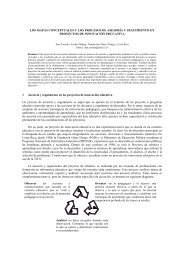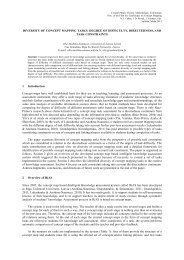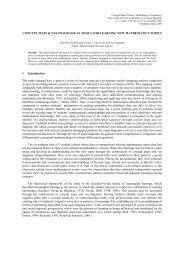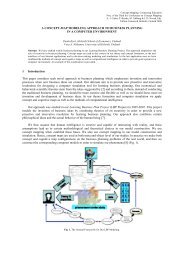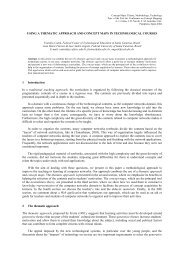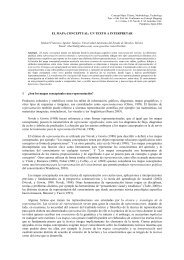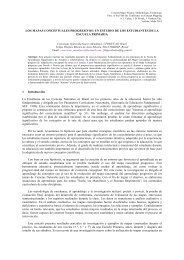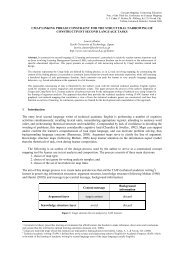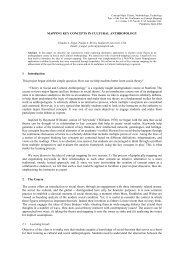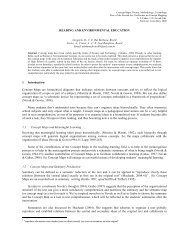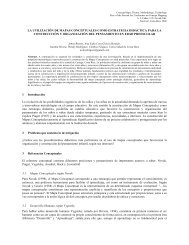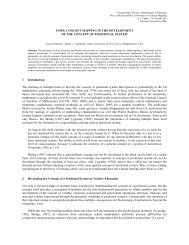Concept map under modified bloom taxonomy analysis
Concept map under modified bloom taxonomy analysis
Concept map under modified bloom taxonomy analysis
Create successful ePaper yourself
Turn your PDF publications into a flip-book with our unique Google optimized e-Paper software.
4 Methodology<br />
Using the construction of a concept <strong>map</strong> as a instructional tool means a paradigm shift. The western educational<br />
system utilizes in an intense way of teaching and learning based mainly on rote learning (memorization and retrive),<br />
as a literal learning. The use of concept <strong>map</strong> induces the student to construct symbolic relations between the various<br />
concepts of a particular content.<br />
For this study, the activities were developed in a class of 8 th grade in Elementary School, with the overall content<br />
of “The Initial Period of Organic Changes” (Puberty and Adolescence), attended by 30 students of both sexes and aged<br />
between 12 and 13 years. With a total of 95% frequency in the classroom, 17 students participated in the construction<br />
of three concept <strong>map</strong>s. Considering this study as a qualitative one, we selected the results of one student that illustrates<br />
more clearly the progress made by group facing the educational techniques used.<br />
The investigation was performed in three consecutive stages: planning lessons and resources to be used; evaluation<br />
of concept <strong>map</strong>s constructed by students; and the adequacy of re-planning as a result of the <strong>analysis</strong> according to the<br />
Modified Bloom´s Taxonomy.<br />
In the fist stage was presented a conceptual class “Changes in Adolescence”, where the information was<br />
presented using chalk and blackboard as an unique educational resource. The discussions on the topic considered were<br />
encouraged, and a moment later the students were asked to construct their concept <strong>map</strong>s on classroom content. To the<br />
extent that using the concept <strong>map</strong> as an analytical tool in the learning process while it is happening, this procedure is<br />
configured as a formative assessment, as opposed to traditional summative evaluation at end-stage school.<br />
Figure 3. The third concept <strong>map</strong>.<br />
In the second step, we analyzed these concept <strong>map</strong>s using Bloom´s <strong>modified</strong> <strong>taxonomy</strong> Table(Table 1) seeking<br />
guidance on how it was the student learning, and what cognitive processes and types of knowledge that would still be<br />
required to develop. Considering the cognitive development observed in classroom, it was planned a second and third<br />
classes with the additional use of images about the considered content. At the end of the second class, the students<br />
constructed the second concept <strong>map</strong> as a way to follow the transformations that might occur. The results showed little<br />
changes, little significant results comparing with previous concept <strong>map</strong>, and we realized the need of different pedagogical<br />
resources to stimulate a contextualization and <strong>under</strong>standing of the subject. It was planned to classes 4, 5 and 6 with<br />
37




